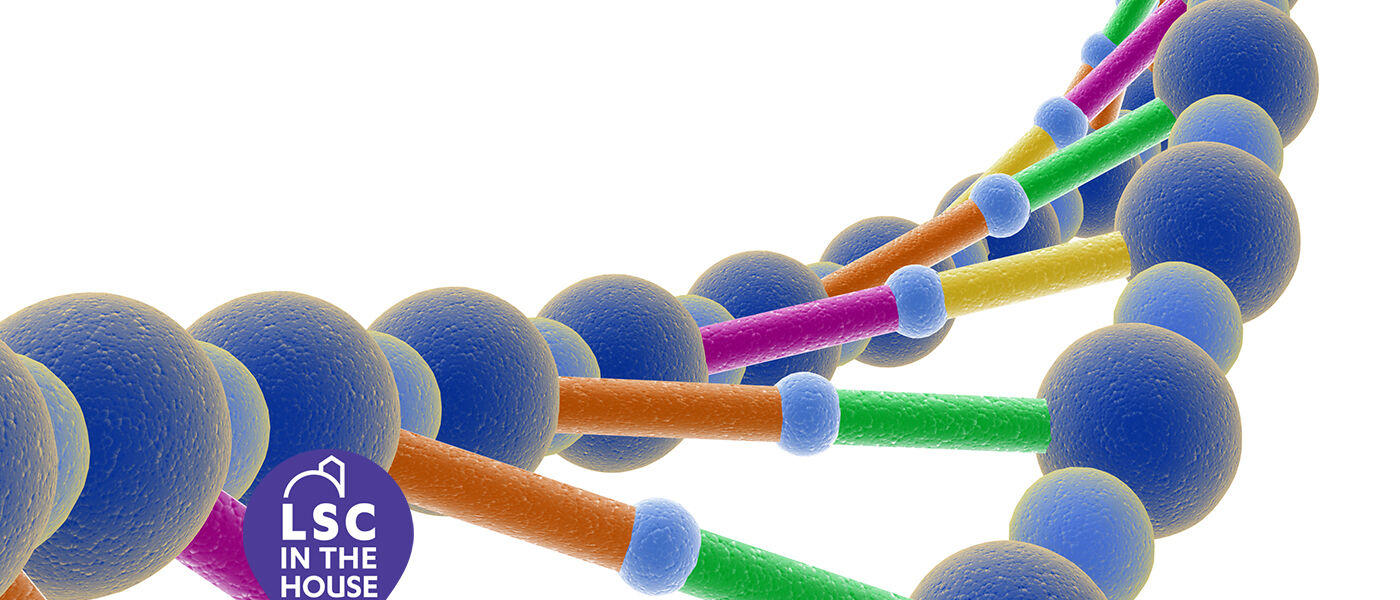Edible Helix
Activity Time: 30 minutes
Recommended Grades: 1 - 8
Objective: Investigate genetics through the structure of a double helix using candy.

- 2 pieces of long licorice (like Twizzlers)
- 18 toothpicks
- Tape
- 36 small colored marshmallows (yellow, green, orange, pink—nine of each color)
- 5 paper clips

- Separate marshmallows into groups by color.
- Optional - Label cups or pieces of tape to make flags to label the different DNA bases.
-
a) The yellow marshmallows should be labeled cytosine.
b) The green marshmallows should be labeled guanine.- c) The orange marshmallows should be labeled adenine.
- d) The pink marshmallows should be labeled thymine.
- Once separated, take a yellow marshmallow and stick it to one side of one of the toothpicks. To the other side add a green marshmallow. Green and yellow marshmallows will always go together. Pair up all of the green and yellow marshmallows on toothpicks.
- The same thing goes for the pink and orange marshmallows. A pink marshmallow should be placed on one side of each remaining toothpick, and an orange marshmallow on the other side.
- As soon as the marshmallows are all on the toothpicks, take the two pieces of licorice and start adding the toothpicks to them.
- There should be one piece of licorice at each end of the toothpicks. You may place the pairs in any order, just make sure to keep the marshmallows in their correct pairs.
- Once you have placed all of the toothpicks onto the two pieces of licorice it will look like a ladder; hold each end with one hand and give it a twist. Now you have your edible double helix. (Be careful of the toothpicks!)

Our bodies are made up of all different kinds of cells. In each of these cells, we have something called DNA, which stands for deoxyribonucleic acid. DNA is located in the nucleus of the cell. The purpose of DNA is to store information about the cell that helps it develop, survive, and reproduce.
DNA is made up of molecules called nucleotides. Each nucleotide contains one phosphate group, one sugar group, and one nitrogen base. Nitrogen bases are made up of four building blocks: adenine, thymine, guanine, and cytosine. Adenine and thymine are always paired together, while guanine and cytosine are always paired together. The licorice used in this experiment serves as the backbone of the DNA and the four different colors of marshmallows represent the nitrogen base pairs.
The order the base pairs are in determines the DNA’s instructions, also known as genes, or its genetic code. We each have our own special DNA coding. That is what makes us unique! Our genes tell a cell how to make a specific protein. The proteins are then used by the cell to perform certain tasks, grow, and survive. We pass on our genes to our biological children.
